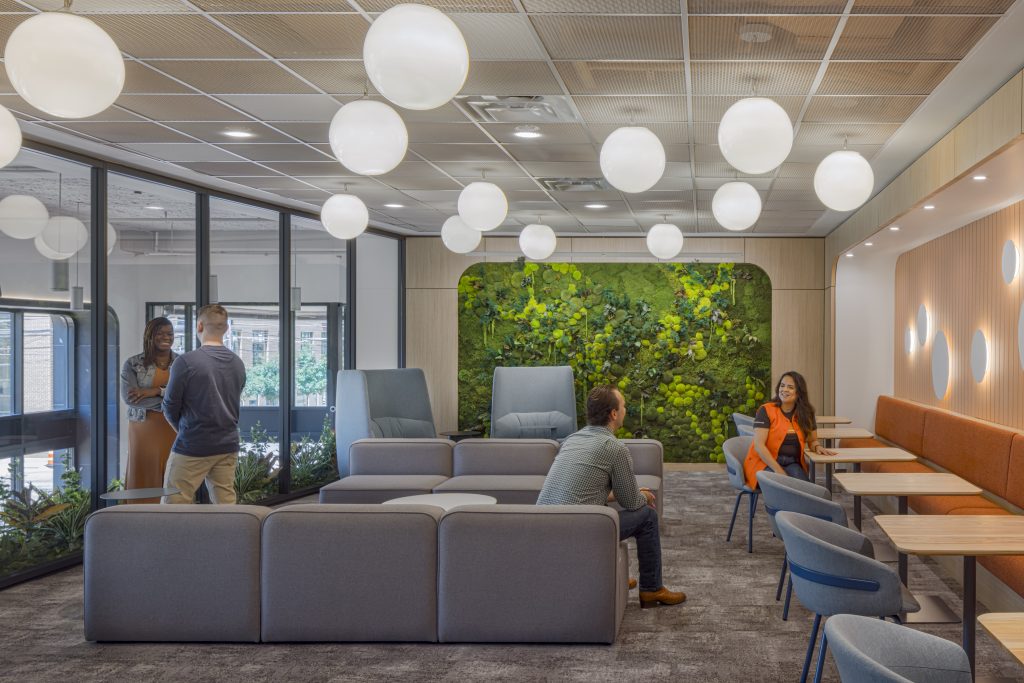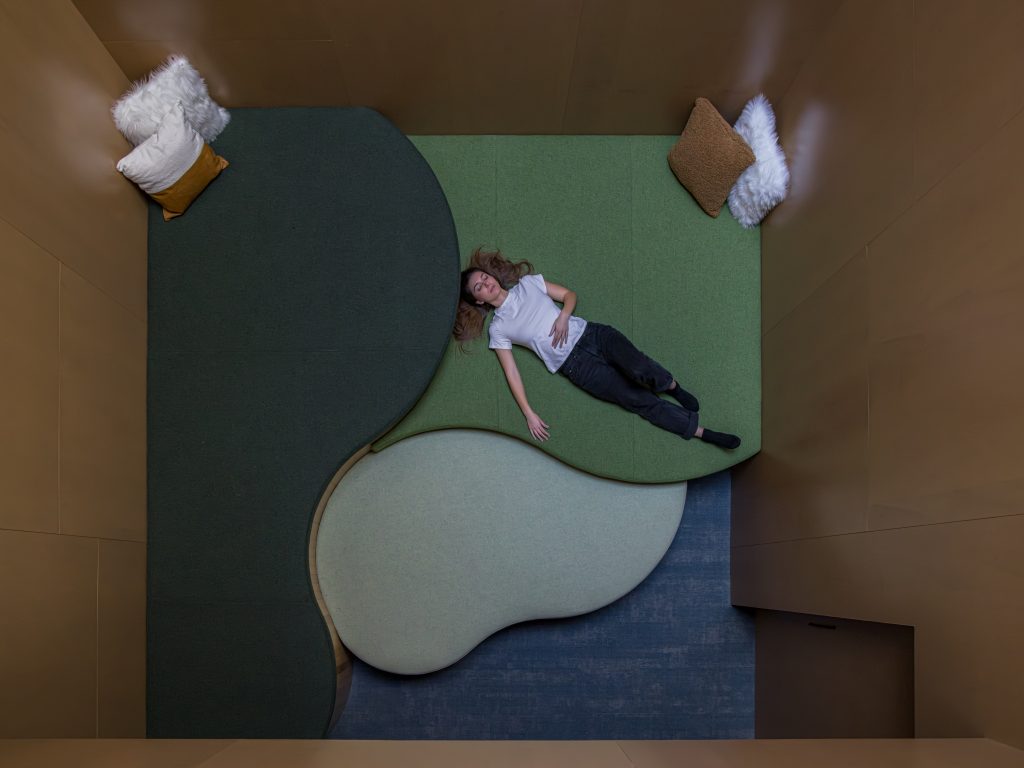DLR Group’s Abbey Cwiek-Garrett shares how small changes in workplace cues and technology integration can enhance focus and streamline communication, creating a seamless and intuitive work environment.
Small distractions can hinder focus when tackling tasks, a familiar challenge for anyone who has worked in an office. These minor interruptions, whether they divert our attention, disrupt our train of thought, or prompt an involuntary shift in focus, can impede productivity and foster frustration among colleagues in shared spaces. Recognizing the importance of providing options in physical environments, workplaces have long embraced this concept. As a researched-based integrated design firm, we address this through cognitive ergonomics – the study of how space can facilitate the mode of work and cognitive shifts our brains undergo throughout the day. However, a complete change of scenery isn’t always necessary to address this issue. What if there’s a simpler solution to mitigate these potential sources of friction?

Humanizing Our Tools
We already utilize products that respond to circadian rhythms to support psychological health, but why not extend this approach to enhance personal communication as well? With the increasing focus on wellness becoming a part of our everyday expectations, such features could not only provide cues regarding our evolving work modes, but also, if desired, our personal wellbeing. Imagine if, during challenging personal circumstances or periods of heightened stress, we could signal a preference for reduced interactions, thereby mitigating unnecessary disruptions. Developing nuanced methods to convey our needs and boundaries in the moment, without necessitating direct explanation, could be a key to creating a more seamless workplace experience with fewer interruptions.
What Feels Natural
Tapping into gestures and cues that humans may intuitively respond to can be a natural way of sending signals that will help us stay focused. For example, color change and light are one visual approach that can be designed to be seen from afar.
A subtle desktop light cue that shifts with your changing modes may signal to your peers ‘I’m engaged in a task that requires my full attention right now,’ and can then gradually transition back to a color that indicates, ‘I’m ready to collaborate and able to chat.’
Consider the early example of a taxicab, for instance. We all understand the significance of its illuminated light. Can we refine this concept to encompass a spectrum of intuitive meanings, thereby creating a signal that can adapt with a user throughout their day, continuously communicating as they move within their physical space?
This experience of providing natural cues requires a multi-sensory approach that is inclusive for all. Tactility can influence sound cues, which play a significant role in shaping behaviors. As users move from a noisy or active space into a more focused, heads-down environment, considering a material transition that reduces footfall noise and absorbs sound may naturally convey a message to lower one’s voice upon entry, reducing auditory disruptions. Softening the space with sound-dampening materials and reducing open views, in some cases, indicates that a user has entered a space where quieter voices and fewer social conversations are expected.

Directive design can also offer intuitive cues to users when queuing up before a meeting or when extending post-meeting conversations. Isolating these pre/post zones from focused work areas can subtly remind us, without excessive signage or verbalization, that these potentially disruptive conversations should ideally remain in designated areas supported by appropriate layout, furniture, and proximity to communal spaces. Deliberate separation of designated workstations can be an effective strategy for maintaining an appropriate distance from louder, more bustling areas. Such barriers don’t always require solid walls or high Noise Reduction Coefficient (NRC) ratings; often, they merely need to serve as suggestive behavioral reminders.

Image courtesy of DLR Group. Confidential tech client.Sozinho Imagery.
Evolve The Familiar
It appears that leveraging the technology many of us already use to incorporate additional features may be a more straightforward approach to implementing some of these changes with minimal change management required. Platforms like Microsoft Teams, Outlook, or Gmail are part of our daily routine for sending and receiving messages. Our phones, which accompany us throughout the day, are often linked to these programs as well. Can we propose additional features that are integrated into our devices through these familiar platforms? It’s crucial to recognize that the changing of signals should not burden the user with additional tasks. If we rely solely on users to adjust their signals throughout the day, the signals may ultimately be inaccurate. Linking our “lights” to our calendars, where we already manage our time, could facilitate the seamless implementation of these more refined communication tools. Our calendar blocks could be categorized based on different modes and signals, eliminating the need for automatic ‘Do Not Disturb’ or ‘Out of the Office’ messages to appear with every interaction.
Whether we’re designing something highly technological or more rudimentary, we must respect how users will approach it, authentically react to it, and what feedback they may desire from it to foster trust in its use.
… cognitive psychology wasn’t so much about the nuances of buttons and control panels… but rather the way that in which humans assume their environment should work, how they learn from it, how they make sense of it.
– Cliff Kuang and Robert Fabricant, User Friendly
Understanding the psychology behind human needs and how we all adapt to change uniquely is crucial for developing better communication tools. This understanding remains the most critical framework for eliminating unnecessary barriers in both our work and workplace experiences. Solutions that consider simple shifts rather than drastically deviating from established behavior models are more likely to be embraced. Taking the time to assess current habits and practices, and building upon what works for diverse groups of users in various settings, could be the key to creating a truly intuitive environment. Designing based on research, always striving to anticipate user needs, fosters trust in the built environment and helps dispel assumptions, enabling the advancement of the most supportive practices.
Images of a confidential tech client are courtesy of DLR Group and Sozinho Imagery.


